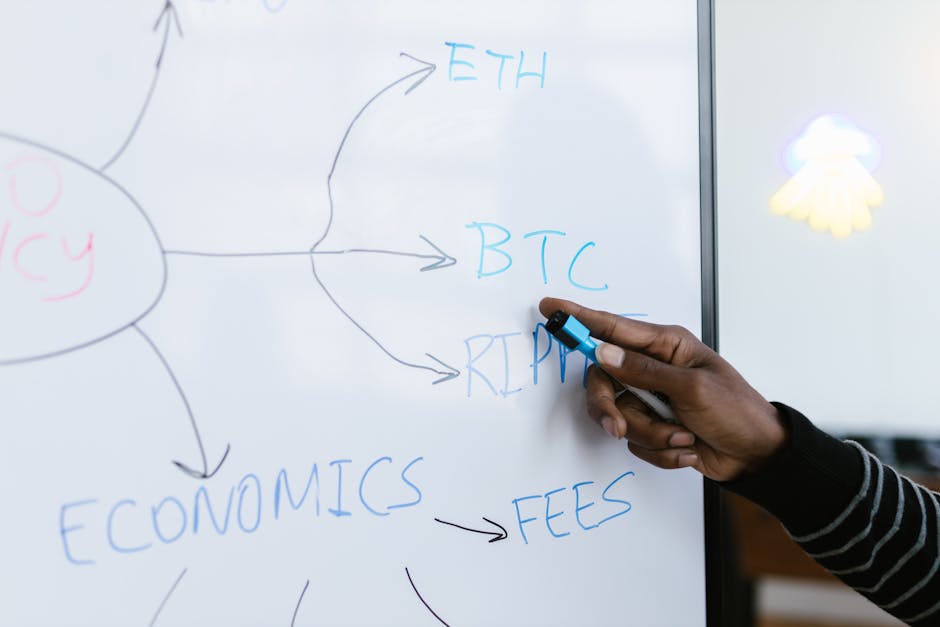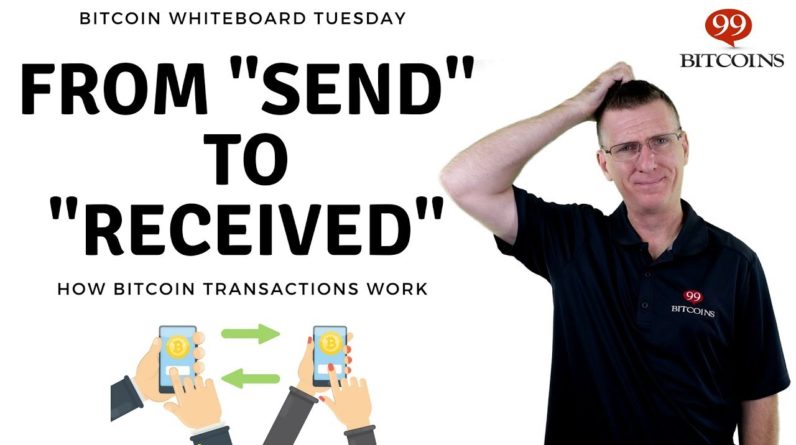
What is Halving Bitcoin…
No, not having bitcoin… halving Bitcoin. What does it mean?
When does it happen? What happens to the value of bitcoin
when it does happen? Well, stick around… Here on Bitcoin Whiteboard Tuesday,
we’ll answer these questions and more. Hi everyone,
I'm Nate Martin from 99Bitcoins.com, and this is Bitcoin Whiteboard Tuesday! During each edition, we’ll go over
some basic ideas about Bitcoin.
That way you can
learn more about Bitcoin yourself or forward these videos to friends
or family members who have questions. When Bitcoin was created in 2009
by Satoshi Nakamoto, he designed a way for new bitcoins
to be distributed without a person or group of people
deciding who should get them. The idea, called bitcoin mining,
was to reward people with new bitcoin for doing the work of
verifying new transactions into new blocks through computational work… Ok, I lost some of you there. For a better understanding of mining,
check out our episode titled, “What is Bitcoin Mining?” Suffice to say that new Bitcoin is created as a reward for miners
verifying blocks in the blockchain.
When bitcoin started,
the reward was set to 50 coins per block. But Nakamoto put into the protocol
a rule where every 210,000 blocks, or roughly every four years,
the reward would be cut in half, and so is named a ‘halving event’. The first occurred in late 2012, where block number 210,000 rewarded
50 coins to the winning miner, but then block number 210,001 only rewarded
its winning miner 25 coins. The second halving event occurred in mid 2016, halving the block reward again so the reward for block number 420,001
came in the amount of 12.5 coins. And so it will go,
until sometime near the year 2140, when all 21 million bitcoins
will have been mined. So why the change? Why not keep the reward the same?
Isn’t that unfair to the miners? The answer to that question
lies in the law of supply and demand. If the coins are created too quickly, and there’s no end to the number of bitcoins
that can be created; eventually there will be
so many bitcoins in circulation that they would have very little value. Vitalik Buterin, who is,
at the time of this episode, the lead developer of the Ethereum project, wrote an op-ed piece for Bitcoin Magazine and explains the need for
slowing the distribution of bitcoins through halving this way: “The main reason why this is done
is to keep inflation under control.
One of the major faults of
traditional, “fiat”, currencies controlled by central banks is that the banks can print as much of the currency
as they want, and if they print too much,
the laws of supply and demand ensure that the value of the currency
starts dropping quickly. Bitcoin, on the other hand, is intended to simulate a commodity,
like gold. There is only a limited amount of gold
in the world, and with every gram of gold that is mined, the gold that still remains becomes
harder and harder to extract.

As a result of this limited supply, gold has maintained its value
as an international medium of exchange and store of value
for over six thousand years, and the hope is that
Bitcoin will do the same.” Ok… but I’m sure you’re asking…
what will happen to the value of my bitcoin? Well, the short answer is… nobody knows. In 2016, a week after the halving event, not much happened to
the exchange rate of bitcoin against the US dollar. Where bitcoin was trading at around
650 US dollars at the time of the event, a week later the rate was about 675,
so not much of a change.
Many believed that
the anticipated rise in price actually occurred between three months
and a year ahead of the event itself, where bitcoin was trading around $300
at a year prior and $430 three months
before the halving occurred. But that was a different time. Add into the mix the media attention
and subsequent public awareness spike in 2017, the exponential growth of ICO’s
and new coins in the marketplace, government regulations and restrictions, not to mention futures
and derivative offerings opening up doors for institutional investment; and it becomes quite the task
to predict what effect the next halving event will have
on global exchange rates.
The important thing to remember is this:
Bitcoin was designed to be valuable. First, in that there will only ever be
a specific number of them in existence, 21 million; and that inflation in bitcoin’s economy is kept in check by slowing its distribution
through the process of halving. I hope this gives you a better idea of
what bitcoin halving is, and why it’s an important feature of
what gives bitcoin its value. Now, you may still have some questions. If so, just leave them
in the comment section below. And if you’re watching this video on YouTube,
and enjoy what you’ve seen, don’t forget to hit the like button, and make sure to subscribe for
notifications to new episodes.
Thanks for joining me here at the Whiteboard. For 99bitcoins.com, I’m Nate Martin,
and I’ll see you… in a bit..




